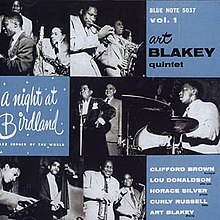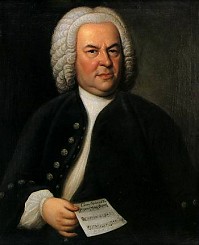Understanding Music
Friday, December 7, 2012
The Legwarmers
On December 1, a Saturday night, I went out to Falls Church, VA to see an amazing 80’s cover band called the Legwarmers. The Legwarmers formed in May of 2001 and have taken DC by storm since then. At their performances, the audience comes dressed up in their ultimate 80’s gear.I was no exception, and dressed up in my skirt with leggings, tennis shoes and of course a side ponytail.I saw a plethora teased hair, legwarmers, sweatbands, and shoulder pads. All this adds to the experience of traveling back in time to the 1980’s with the fabulous music played by the band. Throughout the night they played the classic 80s music from stars like Madonna, Cyndi Lauper, Blondie. My favorite songs that got the crowd going were Ozzy Osbourne’s Crazy Train, Cyndi Lauper’s Girls Just Wanna Have Fun, and Survivor’s Eye of the Tiger. The the lead female vocalist, Cyndi Sindee sounds just like Cyndi Lauper! She was rockin an awesome Madonna outfit too. The guitarist were amazing too. Gordon Gartrell played the guitar solo in Ozzy Osbourne’s Crazy Train, and he killed it! Every band member held was great and held their own. Here is a list of the band members and their forte:
Chet Reno - Bass / Vocals
Cru Jones - Guitar / Vocals
Cyndi Sindee - Vocals / Percussion
Gordon Gartrell - Guitar/Vocals
Lavaar Huxtable - Drums
Capt. Morgan Pondo - Keyboard
Clarence McFly - Tenor Sax
Each band member played a specific character related to 80’s pop culture. For example, “Capt” Morgan Pondo was dressed as though he stepped off of Gilligan's Island and again Cyndi Sindee dressed up as Madonna. Overall, I loved dancing and listening to the music. I had a blast at the performance and will definitely return to hear them again in the future.
Thursday, December 6, 2012
Latin Music
Afro Cuban All Stars
The Afro Cuban All Stars was a group that flourished under
the tourist trade between the U.S.
and Cuban before the Cuban Revolution. They reemerged in the 90’s when they
were recorded. I listened to their album, A
Toda Cuba Le Gusta, which translates to “Everyone in Cuba Likes it”. The entire album made me
want to dance, even the slower songs like, “Habana del Este”. I enjoyed the
flute in the song and you can definitely hear the clave keeping the beat in it.
I really like how in “Maria Caracoles” it opens with the bong drums and the
rest of the percussion comes in followed by the horns and so forth. It is a
party song to me. I have found that through listening to this album, I really
enjoy this group!
Jazz

Art Blakey 1919-1990
Art Blakey was a renowned jazz musician and his music is
still widely appreciated today. He
commanded the drums in the jazz world. I listened to the live album, A Night at Birdland. From the first
song, “Split Kick” Art’s skill is evident. The drums carry the bass line and
give it a snazzy feel. The whole album has the big band jazz feel. I enjoyed
the extra history Art gave about playing “A Night In Tunsia”, that he was with
Dizzy Gillespie when Dizzy wrote the song. I love the trumpet in “Mayreh”. It
is paired perfectly with the drums.
Romantic Era

Franz Liszt 1811-1886
Franz Liszt was a Hungarian Piano Virtuoso during the Late
Romantic Era. I listened to Horowitz
Plays Liszt. My favorite piece was “Piano Sonata in B minor”. The beginning
is very dramatic as it starts out slow then jumps into music with loud piano
keys crashing down. Not quite halfway through the first part in the Allegro
energico, the drama ceases into what I view as a stroll across the pond. Very
soft notes on the piano are played with much of the moving up down across the
keys. The range begins to pick up around the halfway point, but the music is
still calmer than the opening. At one point, it sounds like fairies are flying
around. Then the drama picks back up in a dramatic fashion. The second part Andante
sostenuto, starts out calm then gets dramatic for a few minutes but afterwards
it stays relatively calm. It amazes me how a pianist can play those notes on a
piano, the sound is so complex and fast. The complexity can be heard in throughout
the third part, Allegro energico (fugato). The music is beautiful and amazing
at the same time. I don’t know how Horowitz fingers did not fall off playing
this piece!
Baroque Era

Johann Sebastian Bach (1685–1750)
Johann Sebastian Bach was the most influential Baroque era
composer. In a period that was overly ornate and frilly, Bach was not household
name until well after his death. I listened to a playlist on Spotify of Bach’s
music performed by various groups. Included in my most enjoyed songs that I
listen to is “Orchestral Suite No 3. in D minor”. This music flows very
sweetly. I feel like I am in the music hall of a great palace, watching
servants go to in fro in the graceful manner befitting such a place. The music
is proper and lovely at the same time. The song, Suite No 1 in G Major, reminds
me of someone galloping on a horse to attend to urgent business, but elegantly.
It seems like this to me because of the cello being the highlighted. When the
notes are lower, it sounds like conflict. The end resolves itself nicely.
Medieval Music
The Plainchant, also known as Gregorian chant, is the
earliest forms of written music there were. It was religious in nature and used
in religious services. However, there were some secular songs during this
period. The earliest composers and chanters were Leonin and Perotin. I listened
to the Notre-Dame Catheredal’s choir. The plainchant, Viderunt Omnes had no music. I found it very calming like the rest
of the album. Throughout the entire album, I found the music normally has just
main person and everyone else is in the background. Their voices are the only
instruments making music. The entire album is lovely. I particularly enjoyed, Viderunt Omnes No2 salutare suum ante
conspectum gentium relevati
because it sounds so angelic with the high notes. I am pretty sure it sung by
women
Tuesday, November 27, 2012
Miles Davis and John Coltrane

Miles Davis and John Coltrane are both legends in the world
of Jazz. The former was the mentor of the latter. They both have a scattered
sound and use dissonance in their composition. The music sounds jumbled
together in nonsense, yet it all works and is actually enjoyable. A good
example would be Miles Davis’s Spanish Key on Bitches Brew. A horn instrument is normally always the main
instrument in both Davis
and Coltrane’s music. Many of their songs are similar as well. For example, I
think Coltrane’s “Equinox” is also very similar to Davis ’s “Flamenco Sketches (Alternative
Take)”. Also, John Coltrane’s performance of “Afro-Blue” in 1963 sounds very
similar to Davis ’s
“Freddie Freeloader” on Kind of Blue.
Both songs have a competing feel to it, almost as if all the instruments are
competing against one another to have their voice heard. However, in Coltrane’s
“The Father and The Son and The Holy Spirit”, the music is so disjointed it is
annoying and I have to skip through it. At some points in the song, seven
minutes in for instance, it sounds as though a donkey is dying. The end of the
song is the death of the donkey. I prefer softer ballads, such as Coltrane’s
collaboration with Duke Ellington in “In a Sentimental Mood”, just lovely. Although Miles Davis accomplished more than
John Coltrane did in volume and extent of his work, I believe Coltrane would
have been just a big of musical force that Davis was, if he had not passes away
so early.
Subscribe to:
Posts (Atom)
